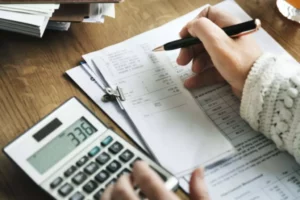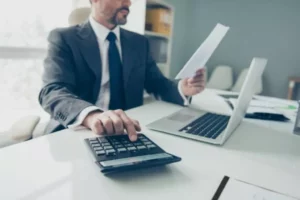
Content

Classified balance sheet is used to provide picture to insiders and outsider about the financial health of organization in classified manners. This statement breaks down all accounts into smaller categories to create a more meaningful and useful financial report (Weygandt, Kimmel, & Kieso, 2012). In this example, the classified balance sheet provides a clear and organized overview of TechWidget Inc.’s financial position as of December 31, 2023. By categorizing assets and liabilities as current or non-current, it allows users to quickly assess the company’s liquidity, solvency, and overall financial health. A classified balance sheet is a balance sheet statement that categorizes line items by some predetermined criteria.
FundsNet requires Contributors, Writers and Authors to use Primary Sources to source and cite their work. These Sources include White Papers, Government Information & Data, Original Reporting and Interviews from Industry Experts. Learn more about the standards we follow in producing Accurate, Unbiased and Researched Content in our editorial policy. This will include the amount of principal that must be repaid within this time frame. This basic format is often used outright by many businesses and is a good template to start from. Once you have viewed this piece of content, to ensure you can access the content most relevant to you, please confirm your territory.
A company must also usually provide a balance sheet to private investors when attempting to secure private equity funding. In both cases, the external party wants to assess the financial health of a company, the creditworthiness of the business, and whether the company will be able to repay its short-term debts. The balance sheet we learned to prepare in Lesson 1 was an unclassified balance sheet, even though we didn’t call it unclassified.

In a classified balance sheet, rather than simply listing our assets and liabilities, we further break down assets and liabilities into categories. The classified balance sheet aggregates balances into several categories. While these categories depend on the company management’s judgment, the goal is to make them more readable and accessible. Due to this approach, users can comprehend and extract information more easily.
The common stock and preferred stock accounts are calculated by multiplying the par value by the number of shares issued. Each category consists of several smaller accounts that break down the specifics of a company’s finances. These accounts vary widely by industry, and the same terms can have different implications depending on the nature of the business.
The balance sheet is often called a snapshot in time because the data in it shows the reader how the company looks at the moment when the statement was prepared. Other financial statements cover time periods like a month, a quarter, or a year, but the balance sheet reveals the situation at a specific moment, i.e. In this example, Apple’s total assets of $323.8 billion is segregated towards the top of the report. This asset section is broken into current assets and non-current assets, and each of these categories is broken into more specific accounts.
All revenues the company generates in excess of its expenses will go into the shareholder equity account. These revenues will be balanced on the assets side, appearing as cash, investments, inventory, or other assets. A classified balance sheet is a type of balance sheet presented so that the sub-components of assets, liabilities, and equity are presented so that the readers understand the items of the financial statements.
A classified balance sheet follows the same format as a typical balance sheet. The classified balance includes assets, liabilities, and shareholders’ equity. However, there is no standard method of preparing the classified balance sheet. A classified balance sheet arranges the amounts from a company’s balance sheet accounts into a format that is useful for the readers. For instance, the reader can easily calculate the company’s working capital since the classified balance sheet shows the total amount of the company’s current assets and the total amount of its current liabilities. A classified balance sheet separates both the assets and liabilities of your company into current and long-term classes.
In short, the balance sheet is a financial statement that provides a snapshot of what a company owns and owes, as well as the amount invested by shareholders. Balance sheets can be used with other important financial statements to conduct fundamental analysis or calculate financial ratios. Non-current assets are those classified balance sheet assets which are assumed not be readily convertible into cash within one year from the date of Balance Sheet. These assets are also called long-term assets and include fixed assets, longer term investments. The typical balance sheet comes with a standardized format from various accounting principles and standards.
In Classified Balance Sheet Format, there are three basic elements of like Assets, Liabilities and shareholder equity. Information regarding their details can either be provided by wider categories or it can be presented by subcategories to show classification of its basic elements. The shareholder equity is categorized into preferred stock, common stock, capital in excess of par and retained earnings. A classified balance sheet is one that categorizes line items by predetermined criteria.
But there are a few common components that investors are likely to come across. Current liabilities generally include debts that will be due within a year of the classified balance sheet’s date or within its operating cycle. Long-term assets will generally be depreciated over a period of time, and to account for this, they will be reported with the original cost and then the corresponding accumulated depreciation. The assets section will typically contain three common subsections, which are current assets, fixed assets, and other assets. This include note payable, account payable, accrued expense, current portion of installment, deferred income tax and long term includes bond payable, bank loans etc.
These materials were downloaded from PwC’s Viewpoint (viewpoint.pwc.com) under license. Harold Averkamp (CPA, MBA) has worked as a university accounting instructor, accountant, and consultant for more than 25 years. Carbon Collective partners with financial and climate experts to ensure the accuracy of our content. Mary Girsch-Bock is the expert on accounting software and payroll software for The Ascent.